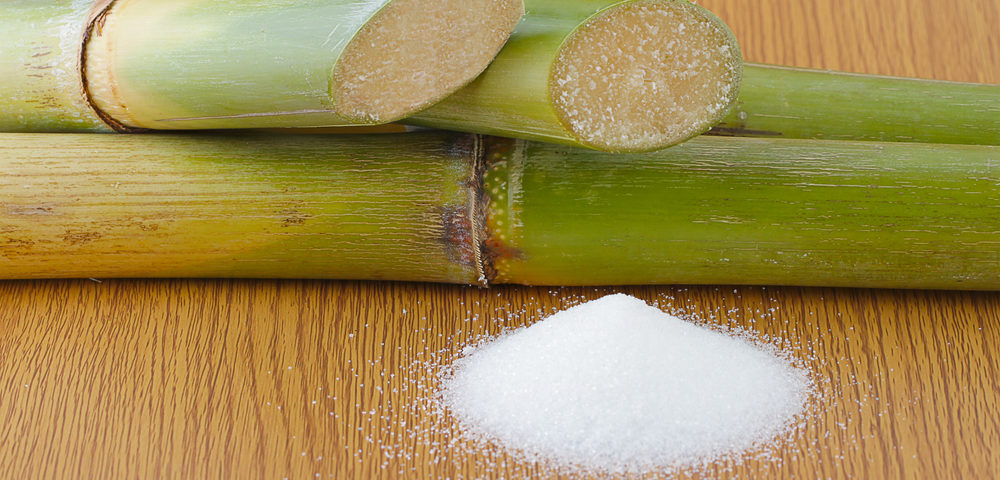The Difference Between Sugar and Cane: Understanding the Basics
The Difference Between Sugar and Cane: Understanding the Basics
Blog Article
Exactly How Walking Cane Sugar Handling Chemicals Improve Sugar Top Quality and Return
The function of processing chemicals in walking stick sugar production is crucial, as they directly affect both the high quality and return of the final item. The unification of activated carbon and enzymes offers to optimize the failure of complicated sugars, inevitably leading to a purer and higher-quality sugar.
Summary of Walking Cane Sugar Handling
Walking cane sugar processing entails a series of essential steps that change raw sugarcane into polished sugar products. The process begins with harvesting, where fully grown sugarcane stalks are cut and transported to processing centers. Upon arrival, the cane undertakes cleaning to eliminate pollutants such as dirt and plant materials.
Complying with cleaning, the cane is squashed to remove the juice, which includes sucrose - sugar and cane. This juice undertakes clarification, where lime and heat are utilized to get rid of remaining pollutants and non-sugar parts. The clarified juice is then evaporated to focus the sugar web content, bring about the formation of thick syrup
Next, the syrup is taken shape via a controlled cooling process, leading to sugar crystals. These crystals are divided from the continuing to be syrup in centrifuges. The raw sugar acquired is usually brown because of residual molasses content. To attain polished sugar, further purification steps are applied, including washing, re-crystallization, and drying.
The end product is either packaged as raw sugar or even more processed into white sugar, satisfying different consumer and commercial demands. This comprehensive series of steps guarantees the production of top notch sugar, crucial for countless applications in food and drink sectors.
Trick Handling Chemicals Utilized
The production of refined walking stick sugar counts on numerous processing chemicals that play significant roles at various stages. This step is essential for boosting the general quality of the removed juice.
Phosphoric acid serves a twin function; it improves the clarification procedure and helps in the elimination of color-forming compounds, adding to a higher pureness of the final item. Furthermore, sulfur dioxide functions as a whitening agent, permitting for the effective removal of unwanted pigments and improving the color of the sugar.
Various other notable chemicals consist of activated carbon, which is utilized for further decolorization, and enzymes that assist in the breakdown of complicated sugars right into easier kinds, therefore improving yield. The cautious option and application of these processing chemicals are critical for optimizing the efficiency of sugar removal and refining processes, ultimately resulting in an extra regular and better sugar item.

Effect on Sugar Quality
How do handling chemicals affect the top quality of polished sugar? The intro of various chemicals in the walking stick sugar processing phase substantially improves the purity and overall quality of the last item.
In addition, making use of triggered carbon and ion-exchange resins during the refining procedure plays a vital function in eliminating off-flavors and undesirable smells, adding to the sugar's sensory account. This improvement not only elevates the visual and organoleptic qualities yet additionally enhances the shelf life by minimizing microbial task connected with contaminations.
Furthermore, the precise application of these chemicals ensures that the sugar shows a constant grain dimension and flowability, which are necessary qualities for both commercial applications and consumer preferences. Generally, the tactical use handling chemicals is fundamental in accomplishing look at this site premium refined sugar that fulfills market standards and customer assumptions.

Enhancing Yield Effectiveness
Enhancing return performance in cane sugar handling involves enhancing different phases of manufacturing to take full advantage of the quantity of sugar removed from raw walking cane. One crucial aspect is the choice and application of suitable handling chemicals, which can facilitate the break down of cell walls and enhance sugar release during extraction. Chemicals such as enzymes and acids play an essential role in this process by hydrolyzing polysaccharides and liquifying contaminations, thereby improving the overall extraction efficiency.

Normal monitoring and change of handling parameters are vital to keep effectiveness throughout manufacturing (sugar and cane). By employing these approaches, sugar producers can not only raise the quantity of sugar acquired yet likewise minimize waste and lower production expenses, adding to a more sustainable and successful sugar handling operation
Benefits for Customers and manufacturers
Cane sugar processing chemicals provide considerable benefits for both manufacturers and customers, developing an extra effective and sustainable market. For manufacturers, these chemicals improve extraction processes, causing greater returns and enhanced sugar high quality. By enhancing the purification and crystallization stages, they decrease waste and increase overall productivity, which can substantially reduce production expenses. This effectiveness allows producers to remain affordable in an international market identified by fluctuating rates and Click This Link need.
The better quality of sugar translates to far better taste and consistency in food items. Additionally, the use of handling chemicals can lead to a more steady supply of sugar, minimizing shortages and cost spikes that can occur due to environmental elements or market variations.
Conclusion

The function of processing chemicals in walking stick sugar manufacturing is pivotal, as they straight affect both the high quality and yield of the last product (sugar and cane). The consolidation of activated carbon and enzymes offers to optimize the malfunction of complicated sugars, ultimately leading to a purer and higher-quality sugar.Cane sugar processing includes a series of vital actions that transform raw sugarcane right into polished sugar products.Enhancing yield effectiveness in walking stick sugar handling entails optimizing different phases of production to make the most of the amount of sugar extracted from raw walking stick.Walking stick sugar handling chemicals play a critical duty Discover More in enhancing both sugar top quality and return
Report this page